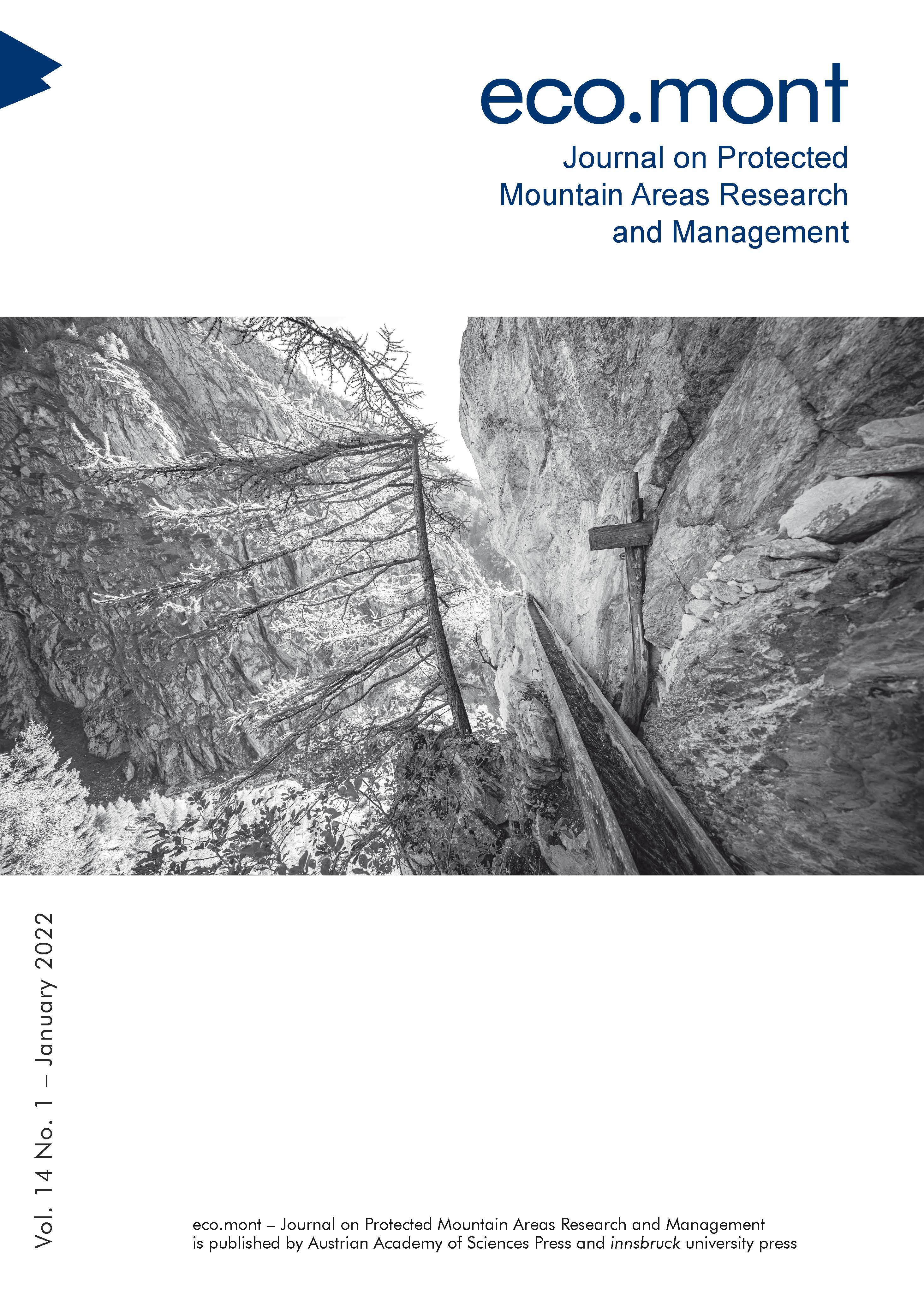Valerie Braun – Martin Coy – Günter Köck (Eds.)
eco.mont
Journal on Protected Mountain Areas Research and Management
Saroj Shrestha,
Ang Phuri Sherpa,
Sony Lama,
Munmun Tamang,
Prakash Kumar Paudel
S. 43 - 46
doi:
10.1553/eco.mont-14-1s43
Verlag der Österreichischen Akademie der Wissenschaften
doi:
10.1553/eco.mont-14-1s43
Abstract:
Nepal’s population of endangered Bengal tigers (Panthera tigris) is on the rise. In recent years, the presence of tigers has been documented at higher elevations. The objective of this study is to explore the possible reasons for the tigers’ presence at the higher elevations. It is critical that these high-altitude habitats for tigers be further explored and protected. The study points out the importance of the Mahabharat range and a longitudinal conservation gradient approach in Nepal. Apart from this, it is imperative to assess the density of tigers and tiger prey in the area. Even though high-altitude ecology may be suitable for tiger growth, the formulation of a high-altitude tiger conservation action plan with effective coordination between stakeholder organizations and concerned departments is of great importance.
conservation, higher elevations, Himalaya, Mahabharat range, presence, tiger
Published Online:
2021/12/30 09:32:43
Object Identifier:
0xc1aa5576 0x003d277a
Rights:https://creativecommons.org/licenses/by-nc-nd/4.0/
The journal “eco.mont” – Journal of protected mountain areas research and management – was published for the first time in June 2009.
The journal was founded as a joint initiative of the Alpine Network of Protected Areas (ALPARC), the International Scientific Committee on Research in the Alps (ISCAR), the Austrian Academy of Sciences (ÖAW) and the University of Innsbruck.
The journal aims to highlight research on and management issues in protected areas in the Alps without excluding other protected mountain areas in Europe or overseas. Its target audiences are scientists from all related disciplines, managers of protected areas and interested individuals including practitioners, visitors, teachers, etc.
The journal presents peer-reviewed articles in English by authors who research protected mountain areas and management issues within these areas. It's published twice a year as a collaboration of the Austrian Academy of Sciences Press – responsible for the e-version – and Innsbruck University Press – responsible for the print version.
Die Zeitschrift „eco.mont“ – Zeitschrift zur Forschung in Gebirgsschutzgebieten – erschien im Juni 2009 zum ersten Mal. Die Zeitschrift wurde auf Initiative des Netzwerks Alpiner Schutzgebiete (ALPARC), der Schweizer Akademie der Naturwissenschaften (ISCAR), der Österreichischen Akademie der Wissenschaften (ÖAW) und der Universität Innsbruck gegründet. Sie hat das Ziel, Themen zu behandeln, die gleichzeitig Forschung und Verwaltung in und über die Schutzgebiete der Alpen betreffen, ohne dabei andere Gebirgsschutzgebiete Europas oder anderswo auszuschließen. Diese neue Zeitschrift richtet sich an ein Publikum von Wissenschaftlern der verschiedensten Fachbereiche, an die Verwalter von Schutzgebieten und an alle sonstigen Interessierten, Praktiker, Besucher, Lehrpersonal etc. einbegriffen. Die Zeitschrift veröffentlicht begutachtete Beiträge auf Englisch von Autoren, die Fragen der Gebirgsschutzgebiete und deren Verwaltung betreffen. Sie erscheint zweimal pro Jahr, auf der Basis der gemeinsamen Anstrengungen des Verlags der Österreichischen Akademie der Wissenschaften, der für die digitale Fassung verantwortlich ist, und der Presse der Universität Innsbruck, verantwortlich für die gedruckte Fassung.



 Home
Home Print
Print
 References
References
 Share
Share

